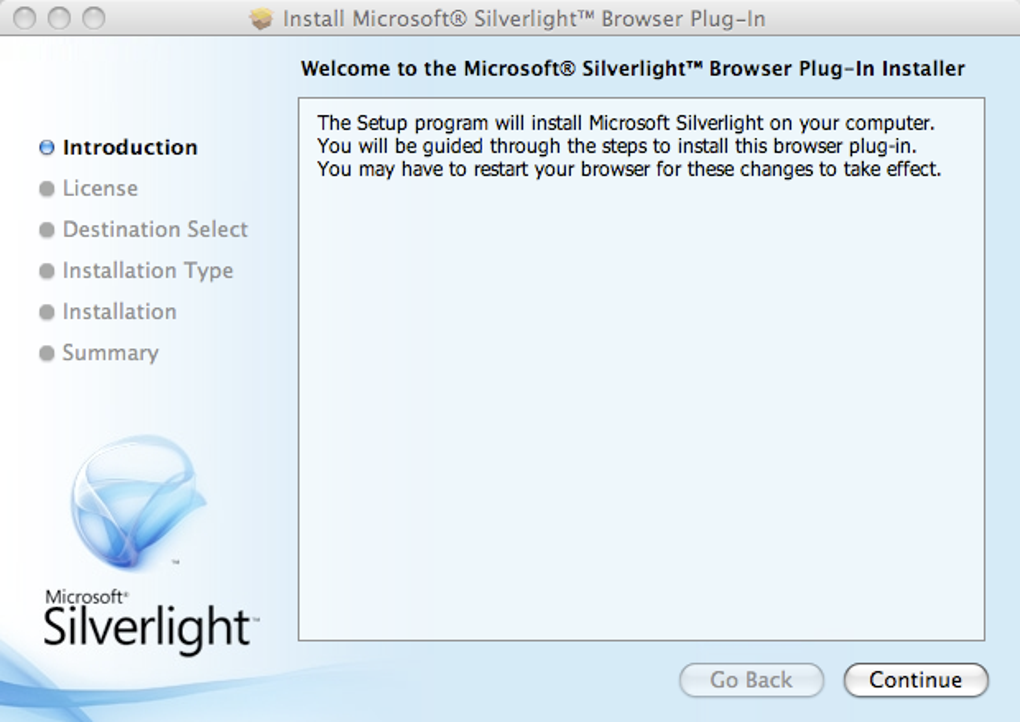

- #Is silverlight required for mac install#
- #Is silverlight required for mac code#
- #Is silverlight required for mac download#
One is managing process-wide state: each instance of the CLR assumes that it's the only one in the process and thus it is the only one touching its static data. There are a few reasons this is a difficult problem. In the past, we've never been able to run two versions of the CLR from within the same process. The fact that Silverlight is not intended to replace the desktop CLR caused the biggest change in the core engine: CoreCLR will run side-by-side in process with the desktop CLR. But the Microsoft intermediate language (MSIL) and metadata used in Silverlight applications is the exact same as used in managed applications for the desktop, and the behavior of your application will be consistent from the user's desktop to the browser. So Silverlight only includes the standard workstation GC, which is tuned for interactive applications. Likewise, the server garbage-collection mode, which is tuned for multiple worker threads that use similar allocation patterns, doesn't make sense for Web-hosted applications. For example, because rich Internet applications are normally simple and short-running, the JIT compiler focuses on decreasing start-up time instead of performing more complex optimizations. However, some changes were made to fit the Web application scenario. This includes the type system and metadata, the garbage collector (GC), the JIT compiler, and the thread pool, as well as other core parts of the runtime engine. The execution engine and virtual machine are the same.
#Is silverlight required for mac code#
In order to ensure compatibility we used the same code for components at the bottom of the stack.

Behavioral differences-even if they are correct-manifest themselves as bugs higher in the stack. But consistency at the bottom of the stack is of key importance. Because Silverlight is intended to target a different set of scenarios from the desktop CLR, we were able to make some changes that simplified CoreCLR and allowed us to reduce the size of the Silverlight installation.
#Is silverlight required for mac download#
The two main design goals were size and compatibility: from a programmer's point of view, coding against the CLR should always be the same while from a user's point of view, the download needed to be very small. The design of CoreCLR began right after version 2.0 of the CLR shipped in October 2005.

NET Framework 2.0 CLR-mscorwks.dll and mscorlib.dll-are each about the same size as the Silverlight 2 coreclr.dll and mscorlib.dll together. This is an amazing accomplishment when you consider that the two major core pieces of the.
#Is silverlight required for mac install#
We were able to get the Beta 1 install down to 4.3MB-about 6 to 10 seconds to install over a broadband connection. In order for Silverlight to be successful with users, we had to make the installation fast. While it's good for developers to have a rich programming environment, users don't want to download big browser plug-ins. We created Silverlight 2 CoreCLR precisely to make Web programming as rich as desktop programming. Moreover, we didn't have to create a separate CoreCLR development environment: you can simply use Visual Studio® to design, develop, debug and profile C# or Visual Basic® the same way you would a desktop app. NET Framework skills that you use for desktop programming, such as the Base Class Libraries, XAML, and C#, and apply those skills directly to Web client applications. In contrast, Silverlight 2 allows you to take the same. Most of them are specific to the task of Web programming-skills learned while programming CSS aren't applicable in other domains. The past dozen or so years have given us many different Web programming technologies ranging from CSS to variants of ECMAScript. Here I will focus on the development core of Silverlight: CoreCLR. NET-compliant languages to program the Web client. One major change in Silverlight 2 is the ability to use Microsoft®. Silverlight™ 2 includes a number of changes in the Windows® Presentation Foundation (WPF) UI framework: new controls, rich networking APIs, and Digital Rights Management (DRM) support.


 0 kommentar(er)
0 kommentar(er)
